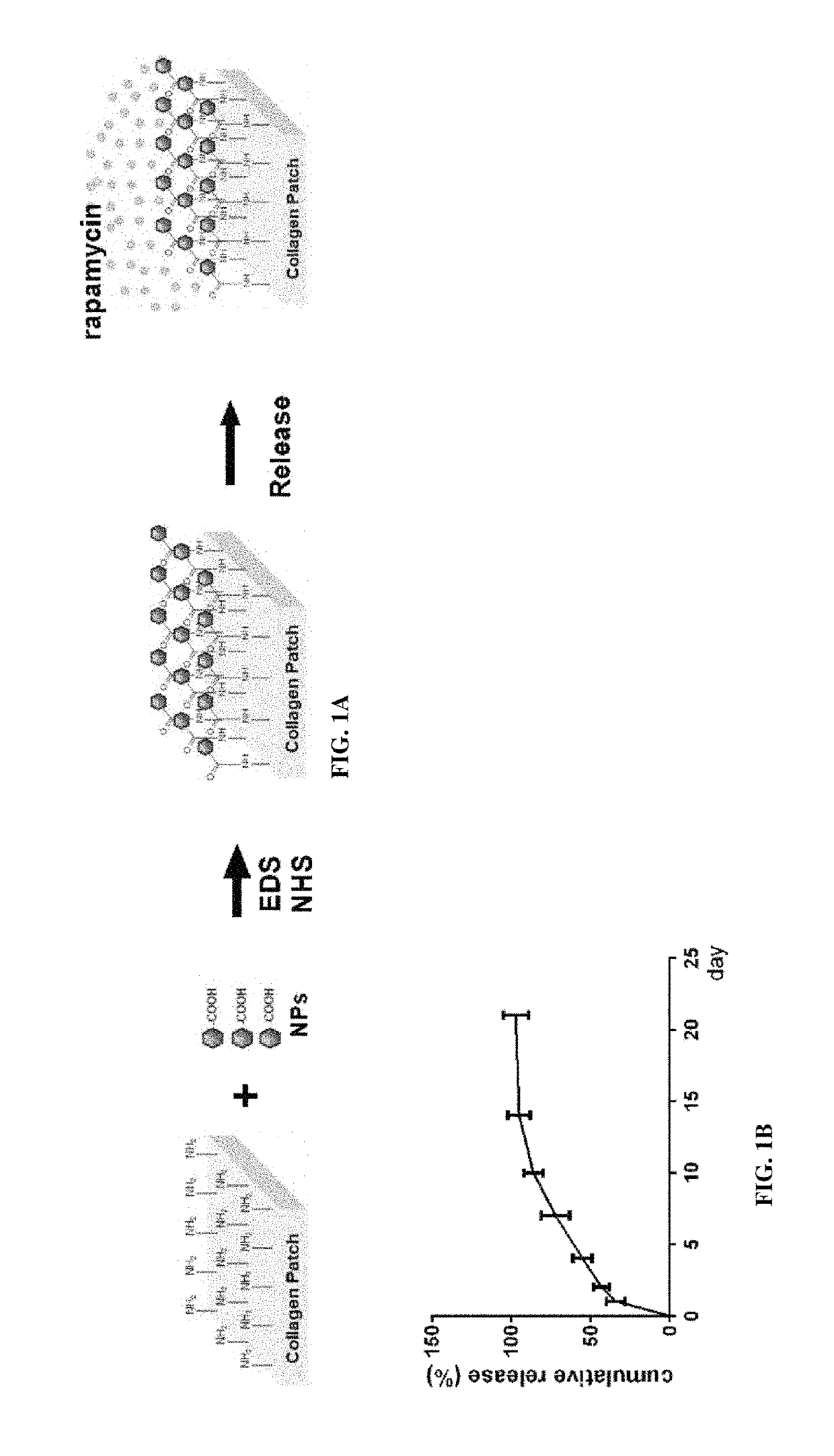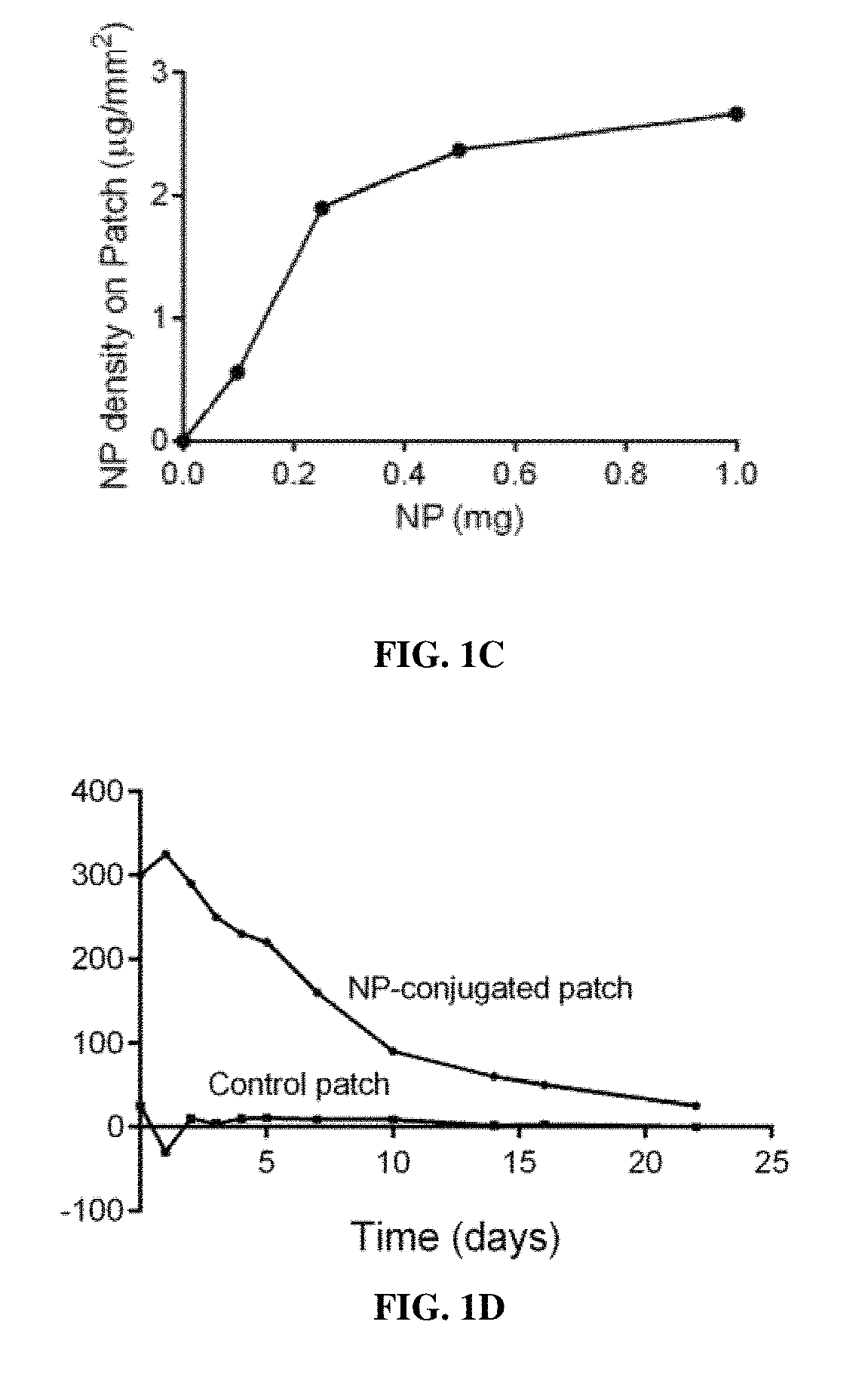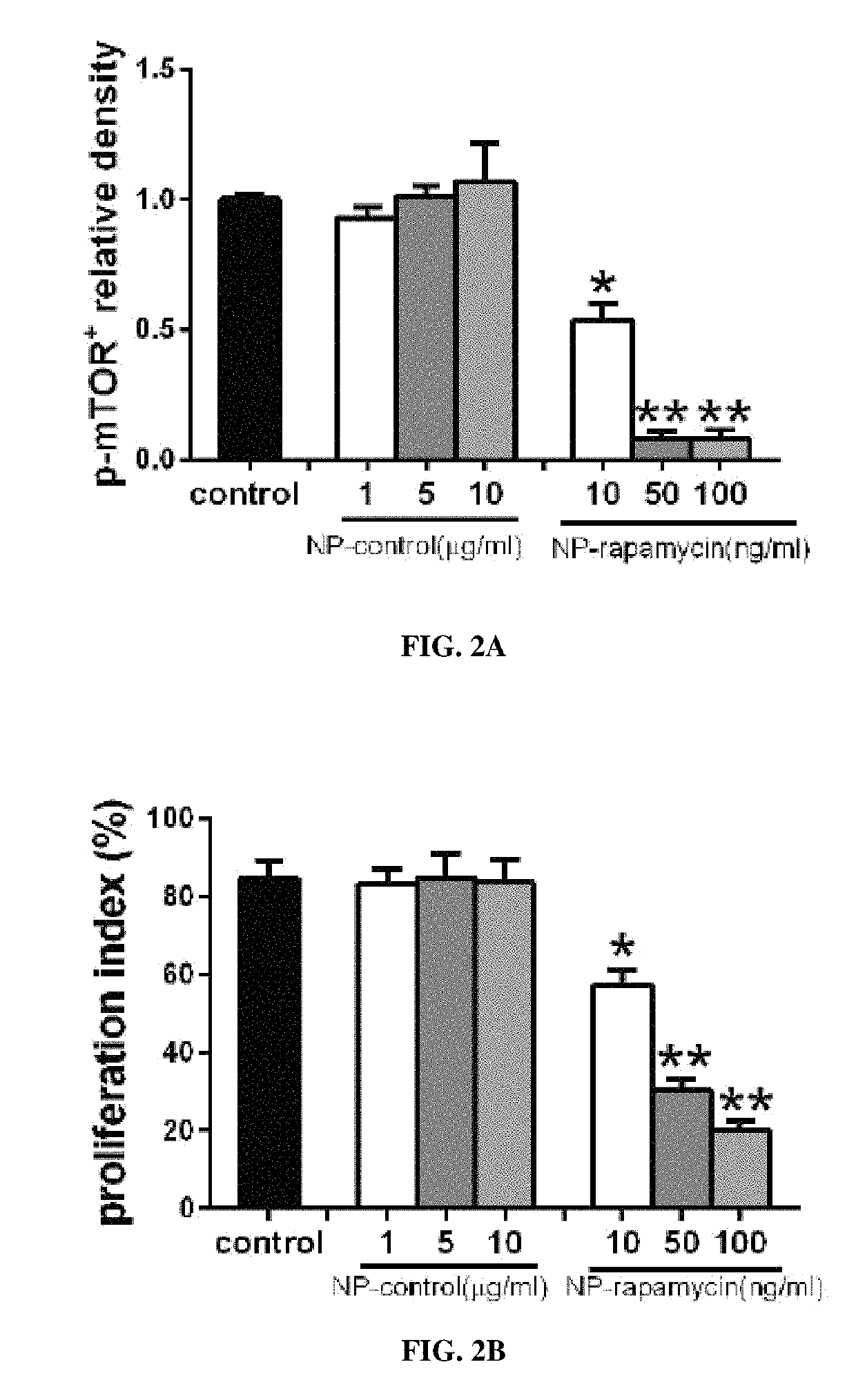Particle conjugated prosthetic patches and methods of making and using thereof
a technology of prosthetic patches and particles, applied in the field of prosthetic implants and drug delivery, can solve the problems of rapamycin inducing systemic toxicities, affecting the healing of vascular tissues, etc., to achieve the effects of reducing or preventing preventing, suppressing or treating one or more symptoms of a disease, and promoting vascular healing and re-endothelialization
- Summary
- Abstract
- Description
- Claims
- Application Information
AI Technical Summary
Problems solved by technology
Method used
Image
Examples
example 1
on and Characterization of Nanoparticle-Patch Composites
[0252]Materials and Methods
[0253]Synthesis of Nanoparticles (NPs)
[0254]NPs were prepared using an emulsion method. Carboxylated PLGA (inherent viscosity 0.55-0.75 dL / g) (100 mg) and rapamycin (5 mg) were dissolved in chloroform, and then added drop-wise to 5% polyvinyl alcohol (PVA). The mixture was sonicated three times and then added to 0.2% PVA solution. The solvent was evaporated for 2 hours while stirring and the PLGA particles were centrifuged before lyophilization (Bal, et al., Sci Rep.; 7: 40142 (2017)).
[0255]The size and polydispersity Index (PDI) of the nanoparticles were measured using a Zetasizer (Malvern, Westborough, Mass.). Light scattering was measured by back-scattering at a detection angle of 173 and a wavelength of 532 nm; the hydrodynamic radius (RH) was calculated using the Stokes-Einstein equation:
[0256]RH=kBT6πηD0
[0257]where kB=Boltzmann constant, T=absolute temperature, η=solvent viscosity, D0=dif...
example 2
cle-Mediated Release of Active Agents from Pericardial Patches is Sustained for 15 Days and Inhibits the Proliferation of Smooth Muscle Cells In Vitro
[0265]Materials and Methods
[0266]Assessment of Active Agent Release from Patches
[0267]Patches conjugated with NP containing rapamycin (NP-rapamycin) were incubated in phosphate buffered saline (PBS) at 37° C. The supernatant of each sample was collected and analyzed for absorption at 400 nm at each time point using a SpectraMax plate reader (Molecular Devices, Sunnyvale, Calif.). Patches conjugated with NP containing rhodamine (NP-rhodamine) were incubated in PBS at 37° C.; control patches were incubated in PBS containing free rhodamine. At various time points patches were washed in PBS and their fluorescence intensity was measured.
[0268]Culture of Human Smooth Muscle Cells
[0269]Human smooth muscle cells (SMCs), passages 6-8, were cultured in endothelial basal medium 2, supplemented with endothelial cell growth media-2 MV SingleQuot Ki...
example 3
cle-Patch Composite Delivery System does not Introduce Toxicity to Lungs In Vivo
[0275]Materials and Methods
[0276]Rats were anesthetized with isoflurane inhalation, and tissues were fixed by transcardial perfusion of phosphate buffered saline (PBS) followed by 10% formalin. Tissue was removed and fixed overnight in 10% formalin followed by a 24-hour immersion in 70 percent alcohol. Tissue was then embedded in paraffin and sectioned (5 μm thickness). Tissue sections were de-paraffinized and stained with hematoxylin and eosin.
[0277]Results
[0278]FIG. 3A demonstrates that there is no decrease in proliferation in the lungs of rats that had NP-rapamycin patches implanted compared to control or NP-control patches. FIG. 3B demonstrates that there is also no increase in apoptosis in the lungs of rats that had NP-rapamycin patches compared to control or NP-control patches. Further, rapamycin was not present in detectable quantities in serum on days 1, 3 and 7 after implantation of NP-rapamycin...
PUM
| Property | Measurement | Unit |
|---|---|---|
| diameter | aaaaa | aaaaa |
| diameter | aaaaa | aaaaa |
| height | aaaaa | aaaaa |
Abstract
Description
Claims
Application Information
 Login to View More
Login to View More - R&D
- Intellectual Property
- Life Sciences
- Materials
- Tech Scout
- Unparalleled Data Quality
- Higher Quality Content
- 60% Fewer Hallucinations
Browse by: Latest US Patents, China's latest patents, Technical Efficacy Thesaurus, Application Domain, Technology Topic, Popular Technical Reports.
© 2025 PatSnap. All rights reserved.Legal|Privacy policy|Modern Slavery Act Transparency Statement|Sitemap|About US| Contact US: help@patsnap.com



